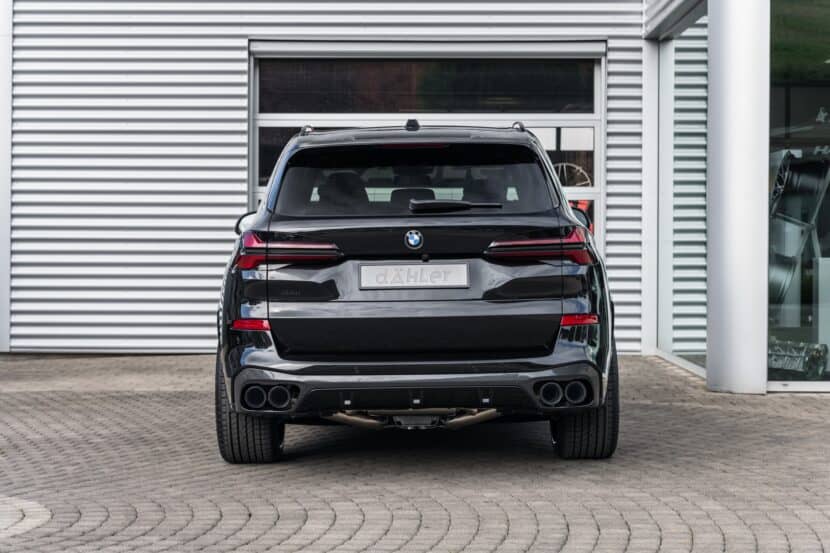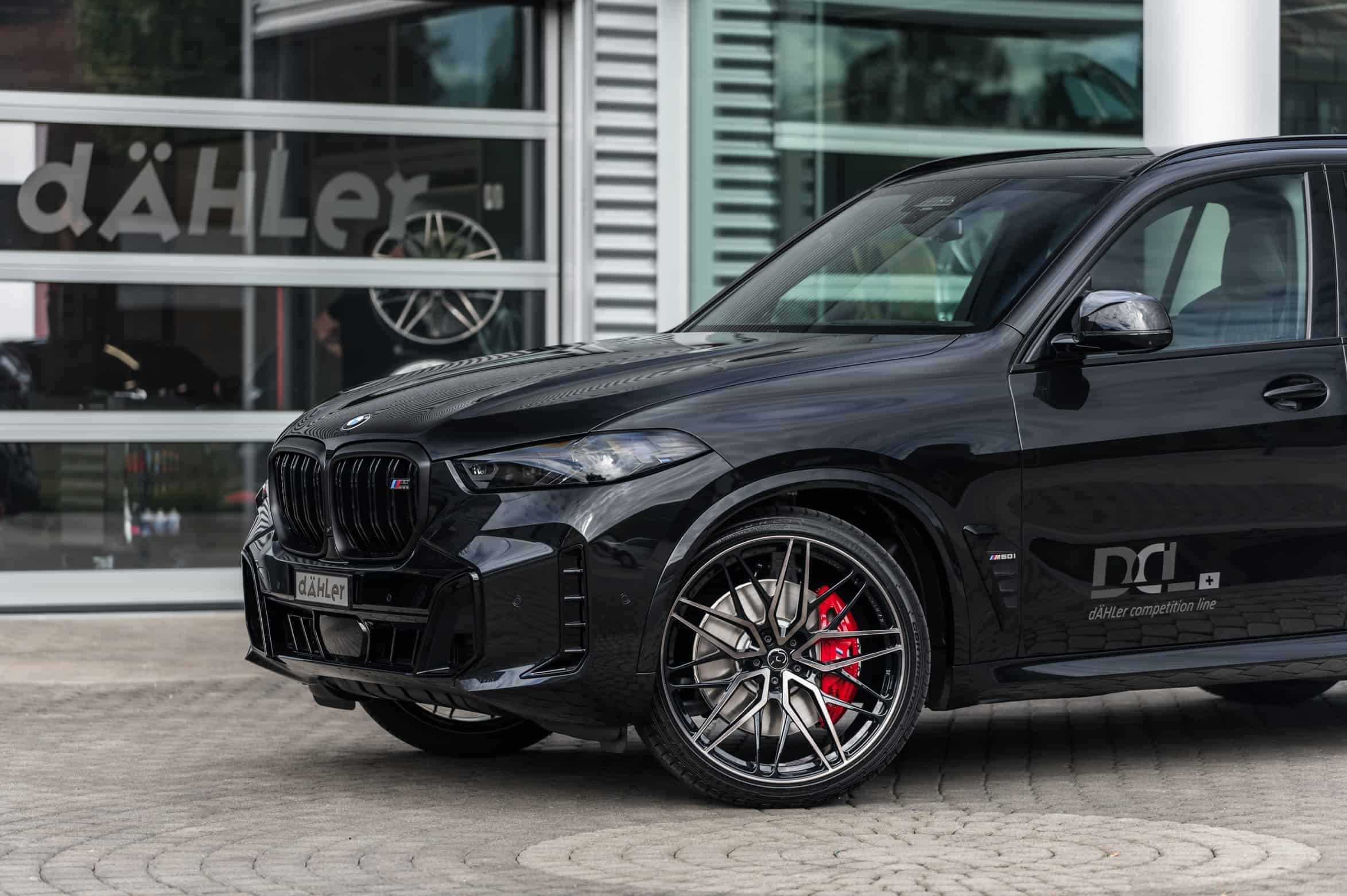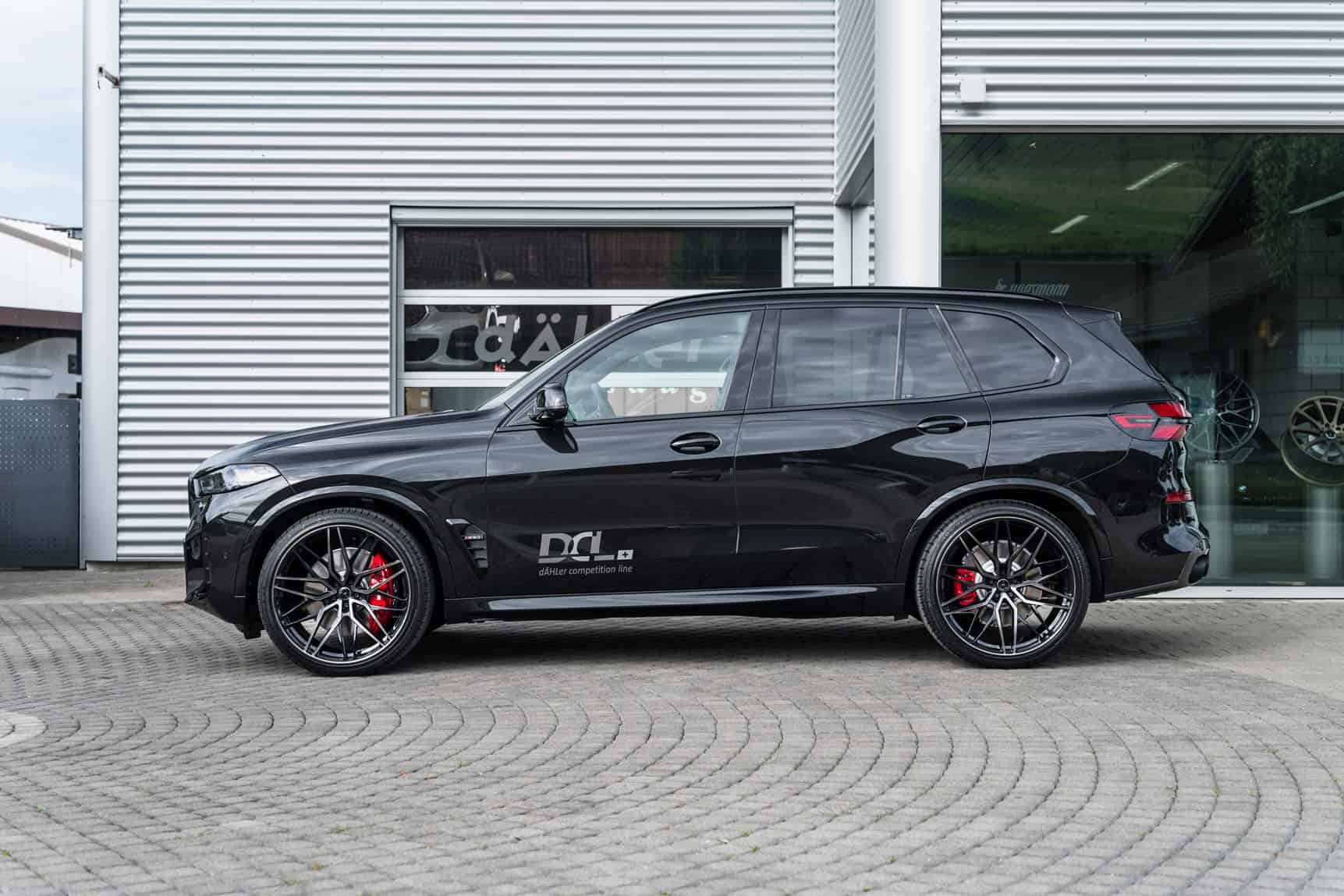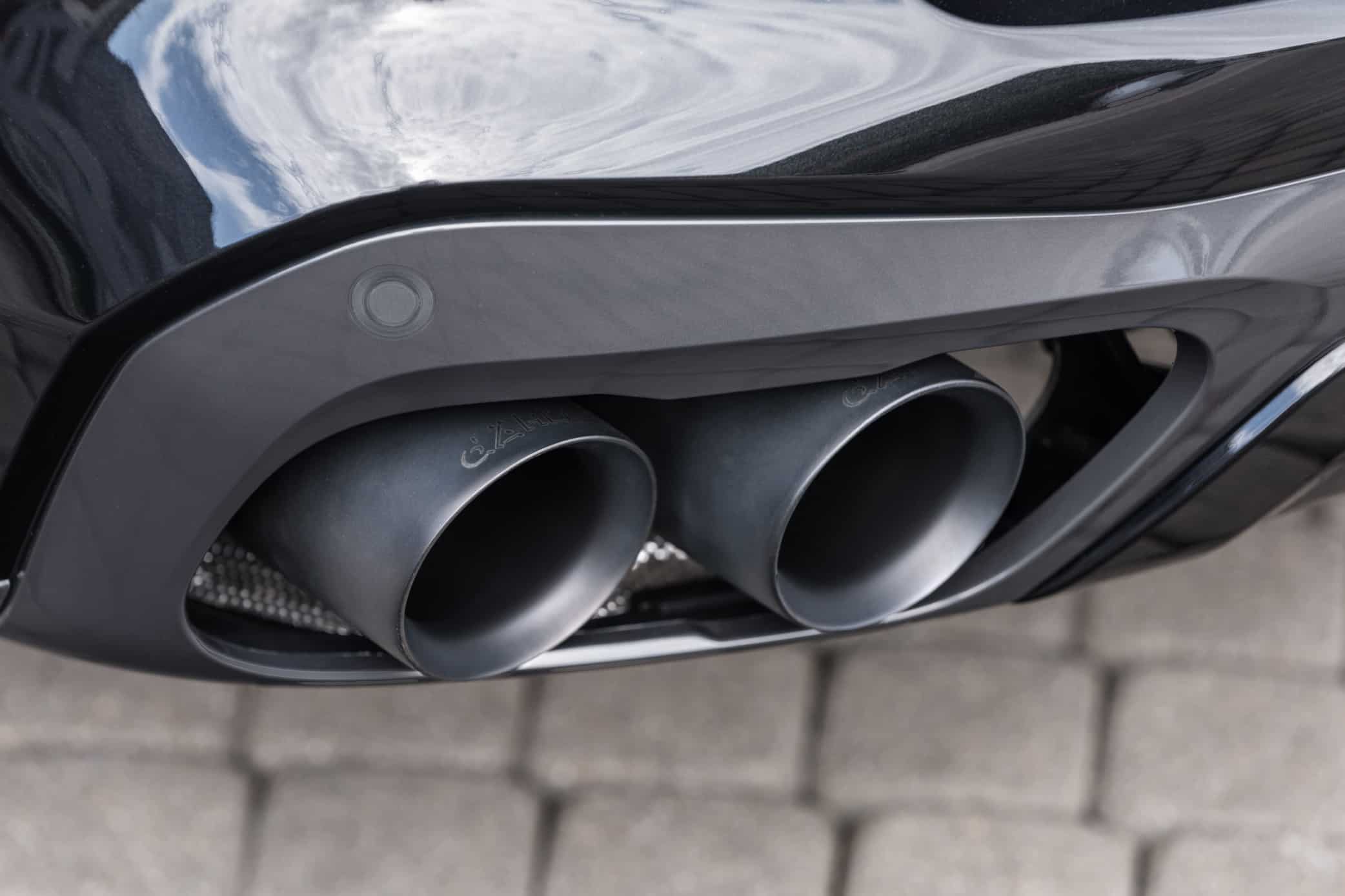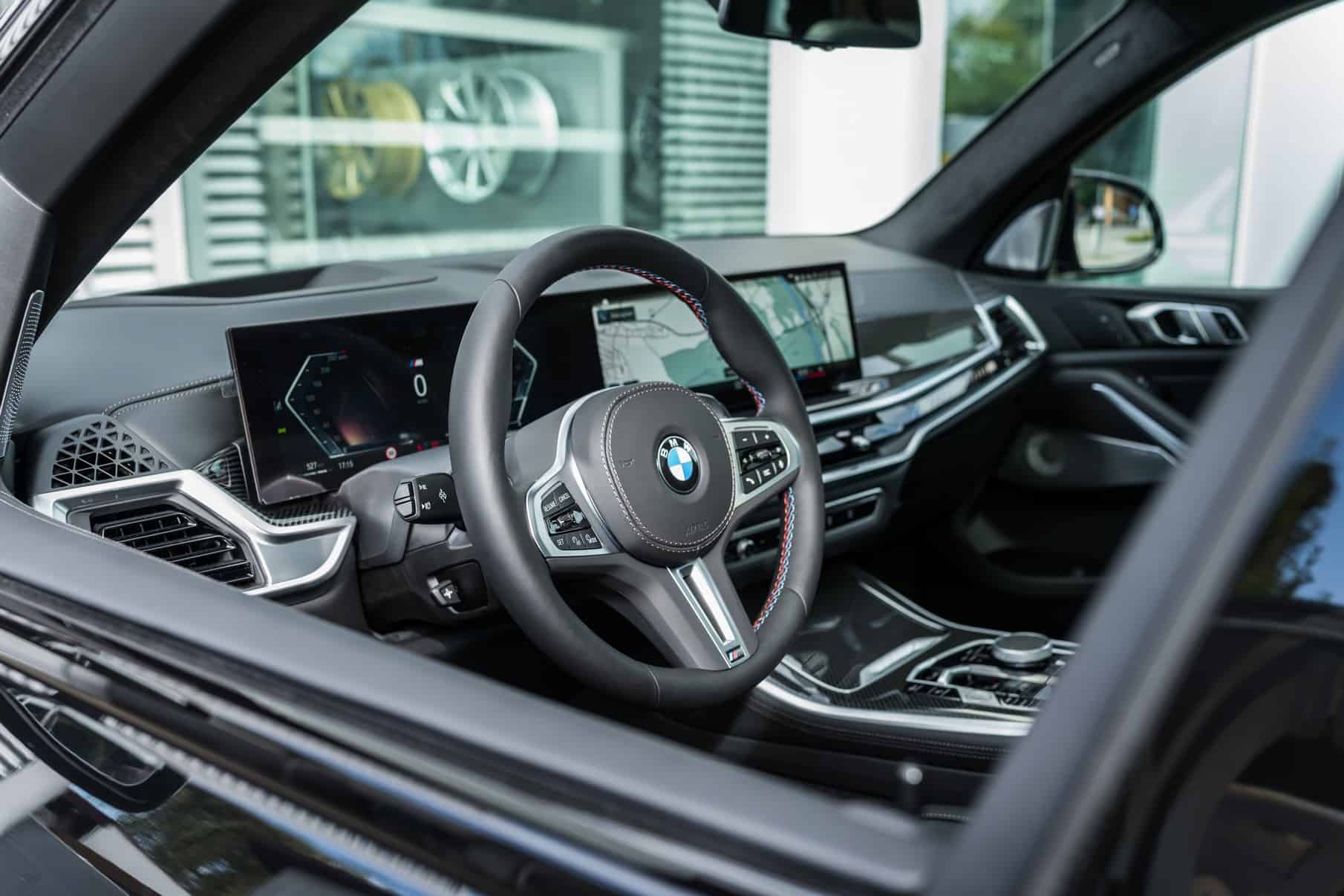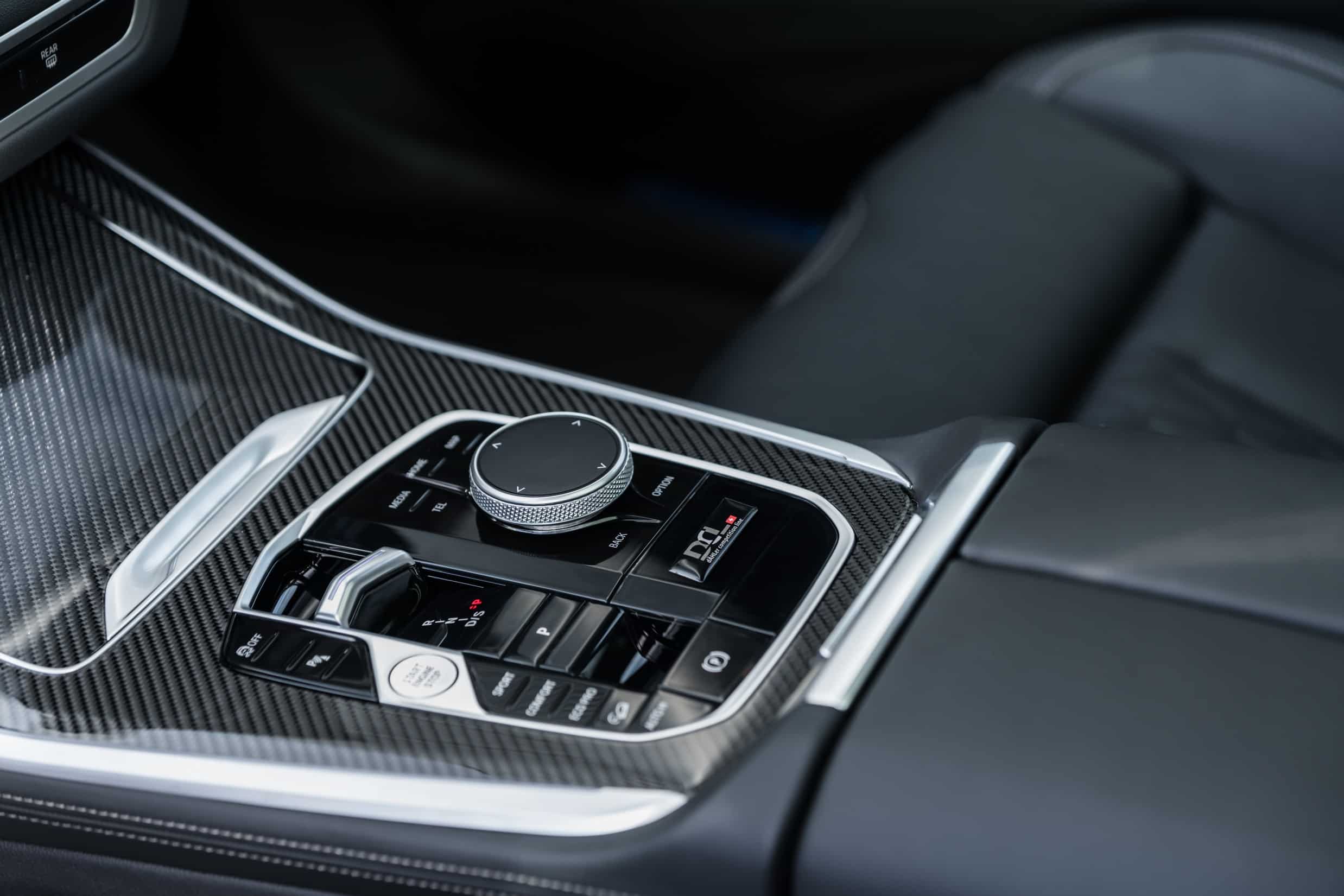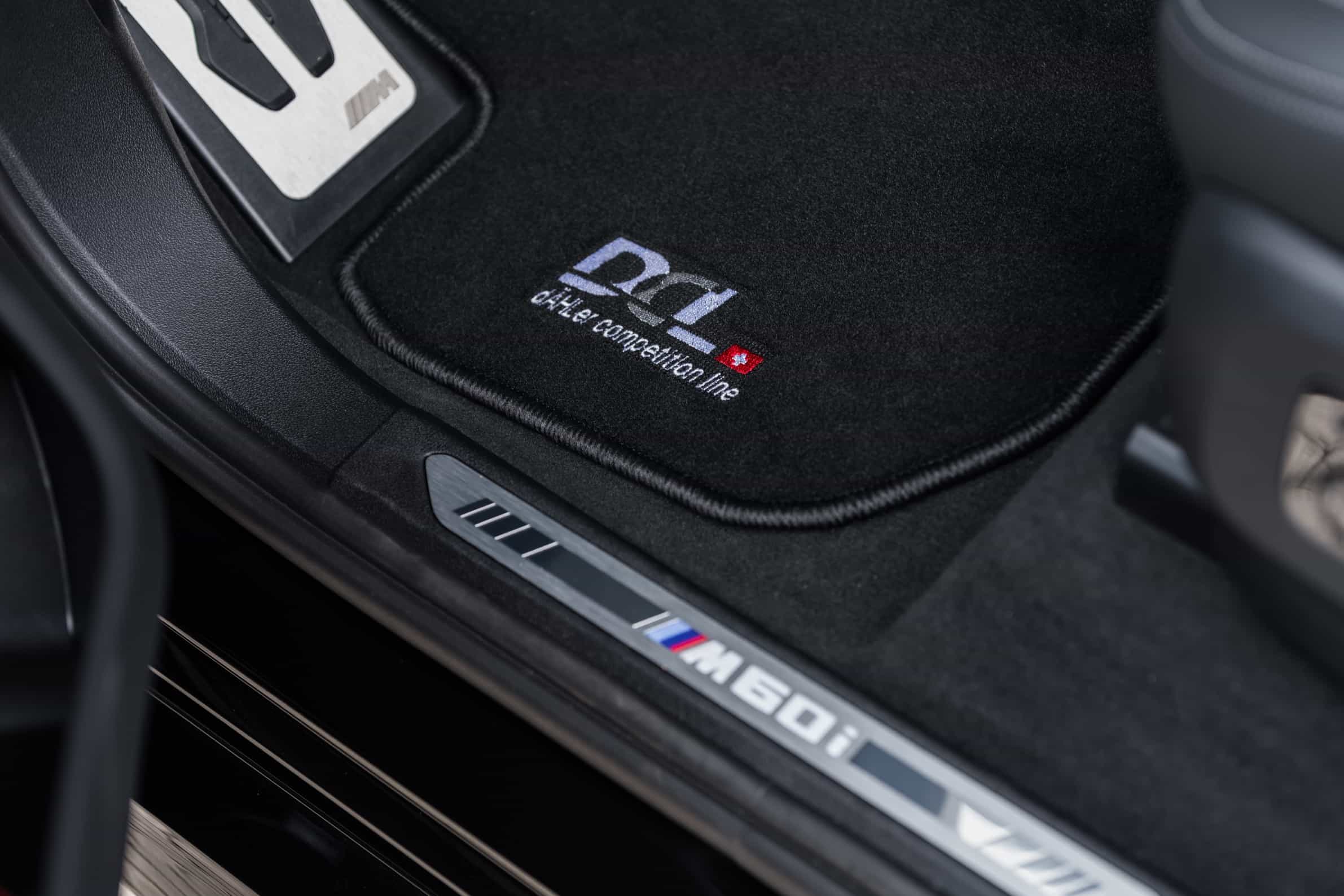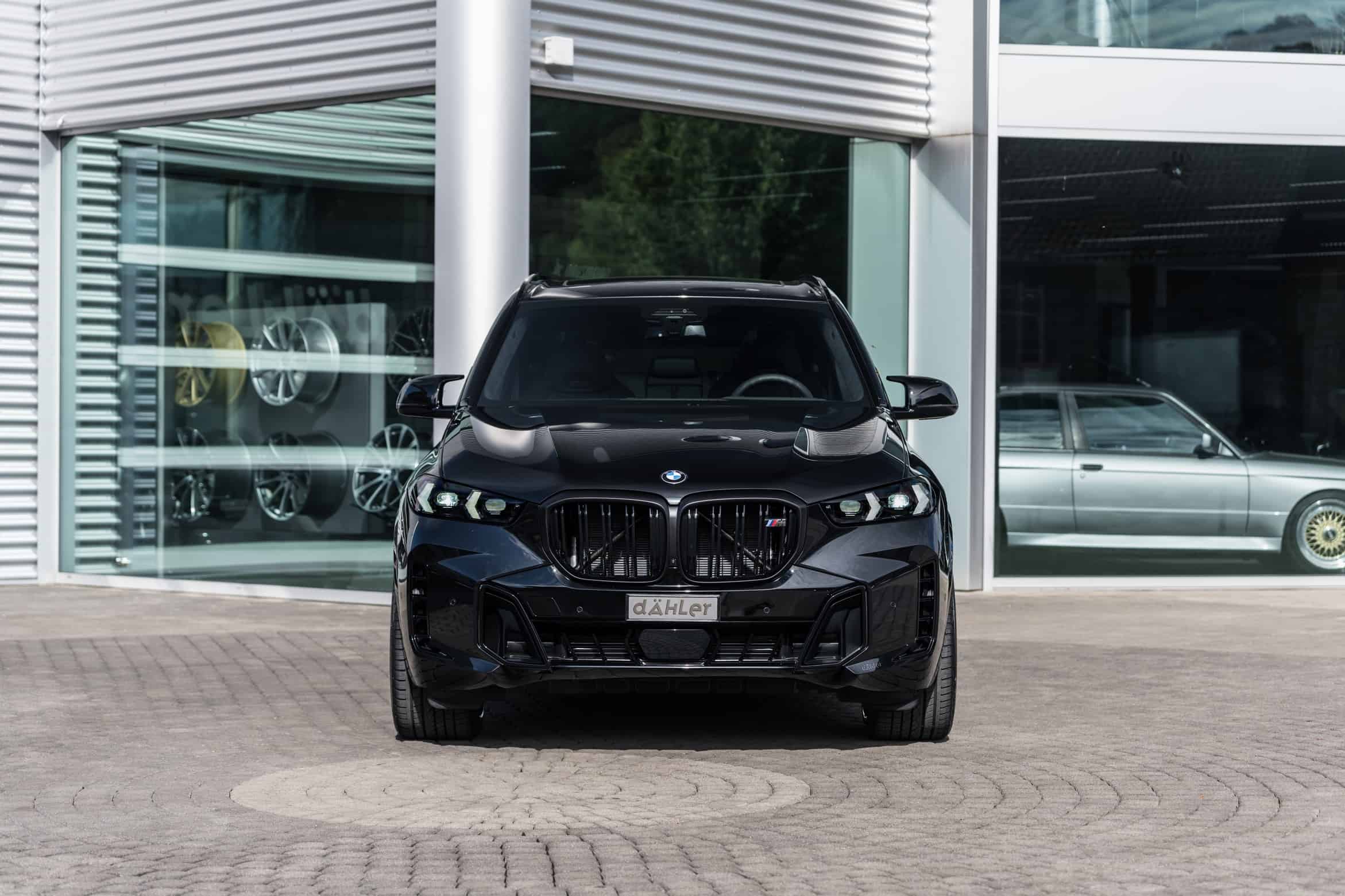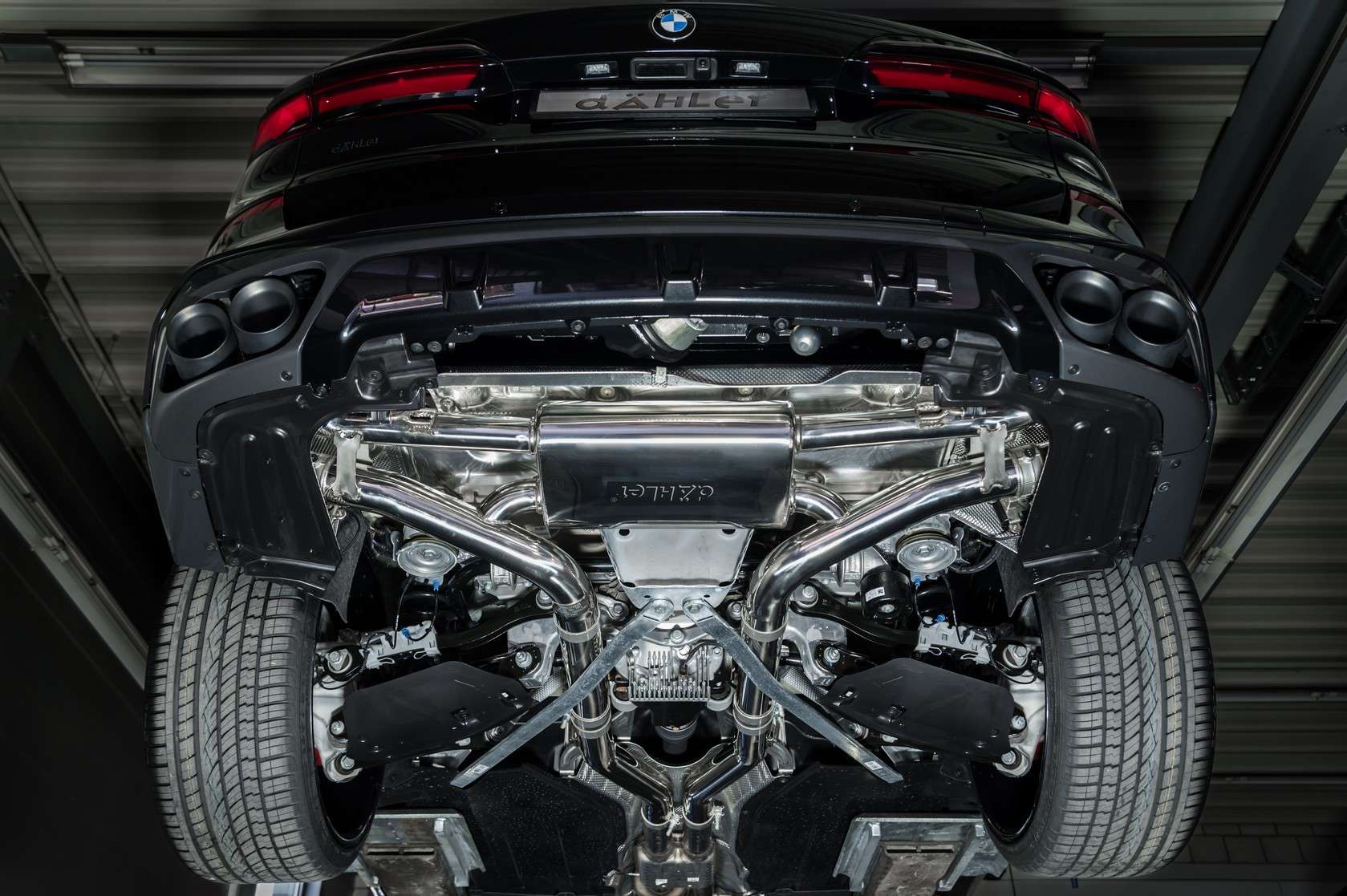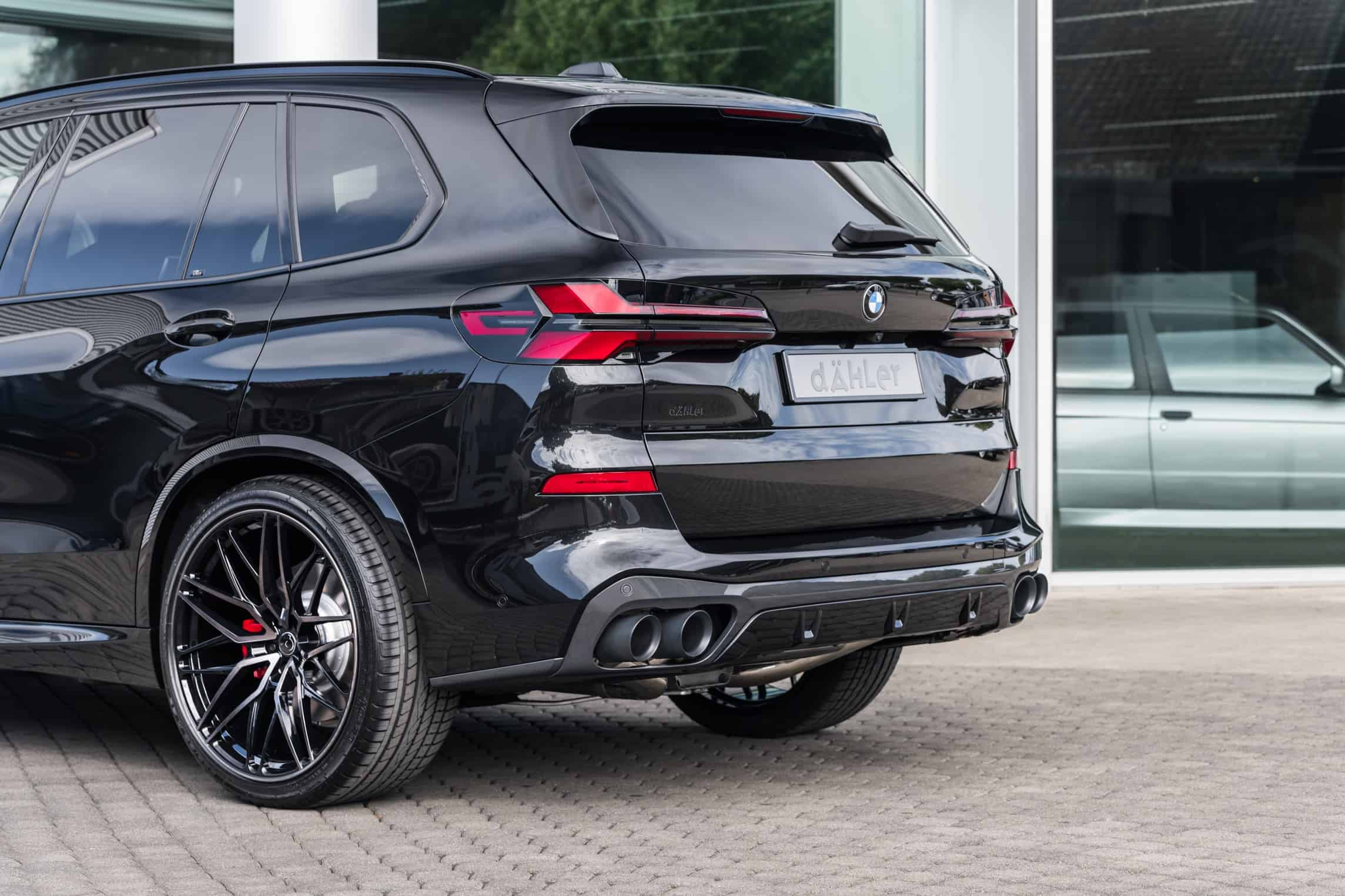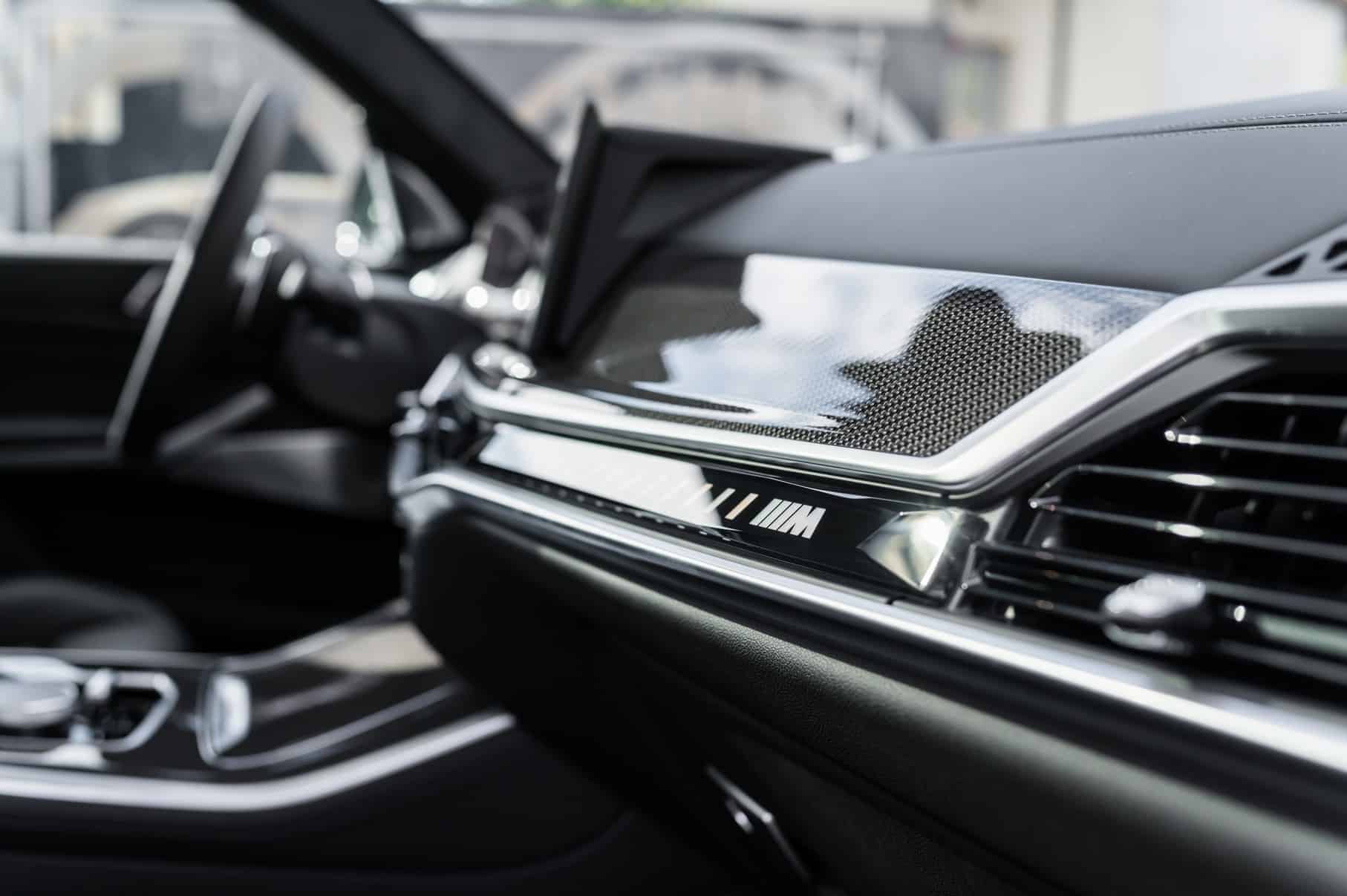Tuners are adapting to a continuously changing automotive industry by working on cars equipped with a mild-hybrid engine. Such is the case here with dAHLer as the Swiss aftermarket specialist is among the first in the business to tweak the BMW X5 M60i unveiled earlier this year. A replacement for the old M50i, the M Performance SUV has switched to the S68 engine, the very same twin-turbo 4.4-liter V8 inside the full-fat X5 M and the XM.
In its standard guise, the engine puts out an already respectable 530 hp and 750 Nm (554 lb-ft) but dAHLer can lift output to 620 hp and 850 Nm (625 lb-ft). Horsepower is nearly on par with the 2024 X5 M Competition while torque is up by a substantial 100 Nm (74 lb-ft). Those in need of more oomph can opt for the stage 2 kit, and while power figures have yet to be released, we do know the extra potency is available only for export markets. In Switzerland and the European Union, X5 M60i owners will just have to settle for the stage 1 kit.
There’s more to this custom build besides the upgraded V8 as the tuner has also developed a new quad-pipe stainless steel exhaust system with 100-mm tips benefiting from ceramic coating. Customers can spend extra and order the exhaust with valve control to alter the soundtrack on the go, but just like the stage 2 kit, it’s not homologated in Switzerland and countries part of the EU.
The 2024 X5 M60i highlighted here happens to have custom wheels in the form of a 23-inch forged set with meaty 305/30 R23 tires. Sport springs are available at an additional cost, or you can spend more on a more sophisticated coilover suspension. In addition, dAHLer will also happily raise the electronic top speed limiter to 168 mph (270 km/h) for those who do a lot of Autobahn driving.
Looking into the future, the days seem to be numbered for the V8-powered X5 in Europe as the next generation of the large luxury SUV will reportedly have eight cylinders only in the United States. Codenamed G65, it’ll stay on the CLAR platform and spawn a purely electric iX5 on the same architecture rather than adopting the Neue Klasse hardware.
Source: dAHLer



